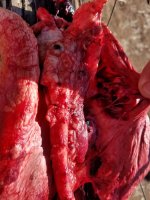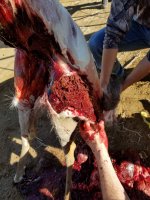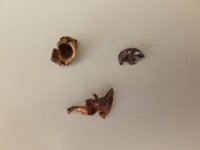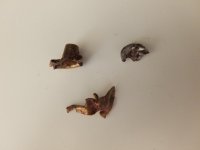Formidilosus
Super Moderator
- Joined
- Oct 22, 2014
- Messages
- 8,225
I wouldn't worry about it, if an animal came in my crosshairs, I am pulling the trigger, even with a Berger. I am sure it is a very rare occurrence, it is just one thing to control for or be aware of. Nothing is perfect, but this is certainly very, very rare, to almost be internet myth.
No personal experience, but a top retailer of Proof rifles sells a lot rifle to hunters. I have seen two pictures from him where it looked like a bomb crater on the side of an animal with no penetration. A second shot on the animal was lethal. The common thing was extremely high velocity Berger. One was on a sheep.
I have heard of it around the interwebs before that, but I gave it little thought until he showed me.
Got you.
One thing that does happen is splash back.
That is the tissue splashes around the entrance point kind of like this (pic from AR15.com video). It’s just starting, entrance from the left-
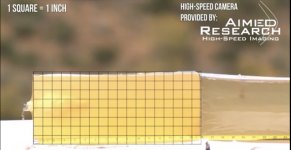
Now the TC is also pushed outward from the entrance-
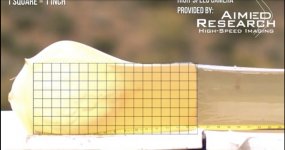
So with very high velocity and an extremely frangible bullet you can get massive entrance wounds due to the tissue completely rupturing on the entrance side, but would still get penetration to the vitals. If you didn’t know what you were looking at or didn’t look closely, it would seem that the bullet just splashed and did not penetrate. While I’m sure a total failure can happen with a true surface blow up, from what I’ve seen it would be extremely rare and what I think is happening most that report it with heavy Begers don’t know what to look for, or aren’t looking for it.
Last edited:


